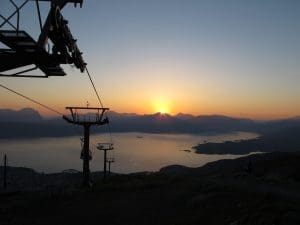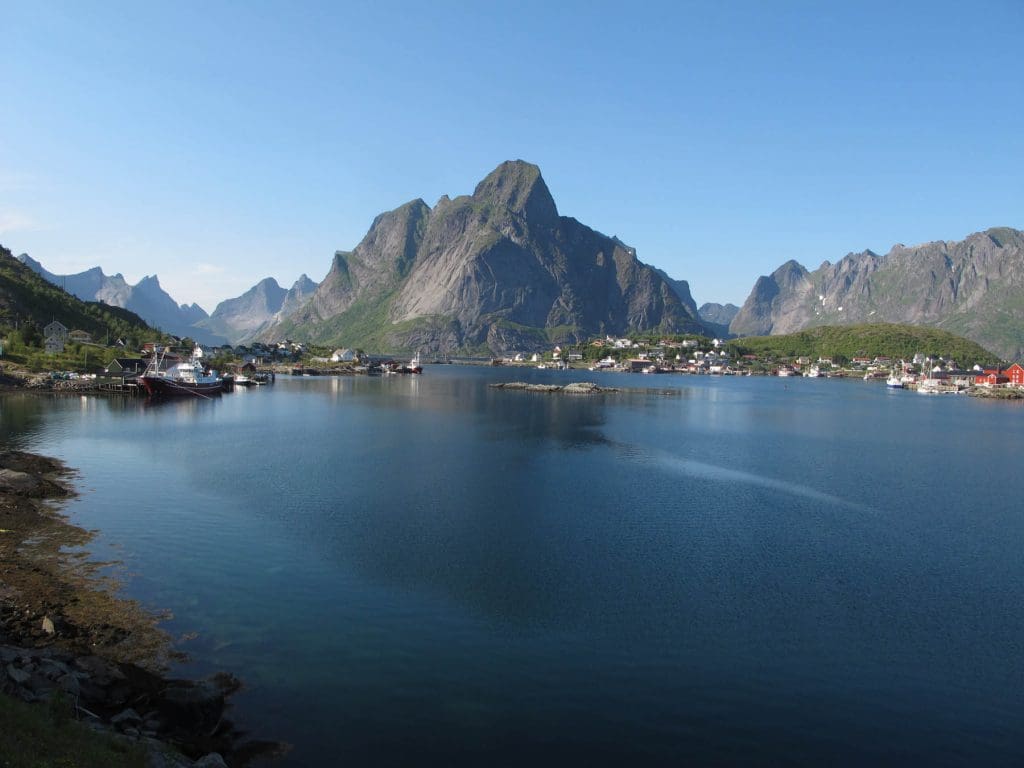
Sick of tropical heat, Mark Bibby Jackson sets off to the Arctic Circle, only to discover there is no escape from the light in the land of the midnight sun.
Those who have watched Al Pacino’s gradual disintegration in the movie Insomnia will know the perils of sleeplessness within the Arctic Circle. Although Norway might not have the same serial-killer tendency as its Arctic cousin, Alaska – at least in the movie – it does have the same midnight sun. Friends had warned me of the tricks that 24/7 daylight might play on the mind, yet still I found myself unprepared for my trip to the Scandinavian nation.
While I had equipped myself with the type of eye protectors that airlines kindly dispense on long haul flights – a tip I would recommend to Mr Pacino – I had sadly omitted to pack my sun-blocker. For in truth, while sleep was never a difficulty, I had not figured for the intensity of the sun, which made the tropics seem like a dull autumnal day in Brighton.
The Norwegian capital should have forewarned me of what to expect. Locals clung to the water’s edge on pontoons eking out the last drop of sun as only the perennially sun-starved can, occasionally plunging into the refreshing waters.
Fuelled by the North Sea’s reserves, over three decades Norway has undergone a massive transformation from one of the poorest in Europe to the sixth richest nation in the world, according to the World Bank. This is evidenced throughout Oslo, where modern bistros and cafés abound with prices that would be a match for the French Riviera. The old shipyard area around Aker Brygge has been transformed into a trendy dining street where credit cards come to die. It’s a far shift from the pre-oil days when Norwegians used to “eat to survive” as one restaurateur described to me.
Nowhere expresses the capital’s newfound confidence more than the Opera House. A spectacular building which puts Sydney’s to shame, it rises from the harbour like an iceberg. While inside some of the finest operatic works are performed, outside locals and tourists ascend the marble floor to get a quite wonderful view of the sun setting – around 10pm in midsummer – over the city.
Most of the many tourists who visit Norway come for the fjords. In midsummer, the southern part of the country is assaulted by marauding hordes of European tourists disembarking from their monstrous cruise liners in a Viking invader roll reversal. As the main draw of Norway is the emptiness of its landscape, I decided to head as far north as possible to the Lofoten Islands, a remote archipelago within the Arctic Circle, stopping on the way at the Geirangerfjorden – well I couldn’t very well visit the land of the midnight sun without going to at least one fjord.
My departure point for the UNESCO-listed Geirangerjorden was the village of Andalsnes. With its central lake guarded over by a mean looking troll, this is also the last stop on the Dombas to Andalsnes railway, one of the most scenic in Europe. As the train twists its way through the valley with waterfalls to left and right, the travelogue reminds you that this service is as much for tourists as for locals. That is part of the ease of travelling through Norway. Everything is geared up for tourists. The following day, my bus driver doubles up as a tour guide, stopping en route for scheduled photo opportunities, while providing me with insightful analysis of Norwegian football – Rosenborg are not what they used to be.
The Geirangerfjorden is spectacular. Somehow farms hang from the sheer cliffs cut by Ice Age glaciers, in defiance of gravity. Although, the town of Geiranger is somewhat of a tourist trap, the surrounding countryside is stunning. It’s well worth taking the bus up the hill to the Dalsnibber lookout some 1,500m above the town for some breath-taking yet totally exposed views down to the fjord. The cold wind makes you feel as though you are in the Himalayas.
Leaving the fjords behind me, I take the overnight train up to Bodø, a town only noteworthy for being the departure point for the ferry to Moskenes in the Lofoten Islands. Few places I have visited compare with the majestic landscape on the islands. Jagged rocks rising from the sea await us. Apparently the tourist season here is short, just a few months in the summer, at other times the islands lie deserted, at least by man. The island is amazing. The waters are crystal clear, the fields littered with beautiful prairie flowers and the sun perpetually above my head – this is where the sun block could come in hand.
Fish hang out to dry in the tiny hamlet of Sakrisøy, a place as remote as it is idyllic. I spend a few hours wandering around the tiny inlets soaking up the tranquillity and trying to capture the amazing blue of the water and sky with my camera, while glorying in the freshness of the air that lies far beyond its technology. Eventually, I stumble into the village of Reine, a budding metropolis compared with Sakrisøy with its restaurant and bar, and finish my day with a most glorious local fish meal.
The following day’s bus trip across the island to the town of Narvik on the mainland reveals the full intensity of the island. There is so much space here that many travellers spend a week or so following trails and camping. It must feel like travelling back in time to an untouched wilderness. Unfortunately, I have a date that evening with the midnight sun that will not wait.
Spending the day wandering around this rather nondescript town, bathing in the remarkably warm Arctic waters, I wait until midnight approaches. Then rather than retire to bed, I take the cable car up the mountain that dominates the town.
The bright midnight sun burns brightly in my eyes as it slowly descends towards the horizon. Then slowly, almost imperceptibly it hovers before making its gradual journey back east drifting ever so slightly upwards on its way. Its movement is only detectable once I return after a few minutes break. Equably remarkable is the passing of dusk towards daylight, without any intervening darkness, even though it is not yet one in the morning. A remarkable experience and one truly worth staying up for. Perhaps Mr Pacino should have followed suit instead of chasing serial killers non-existent shadows.

